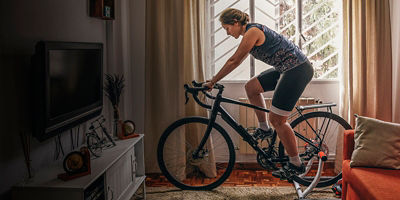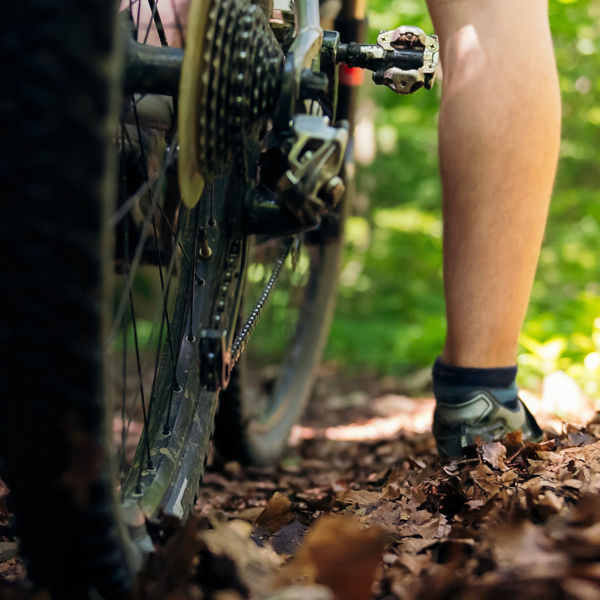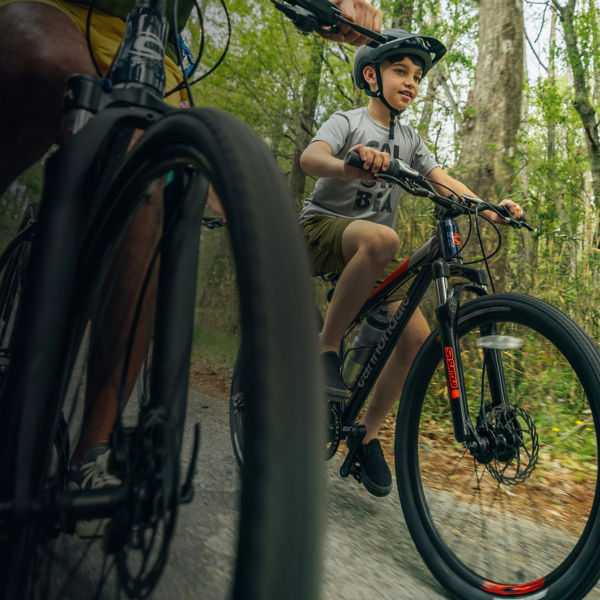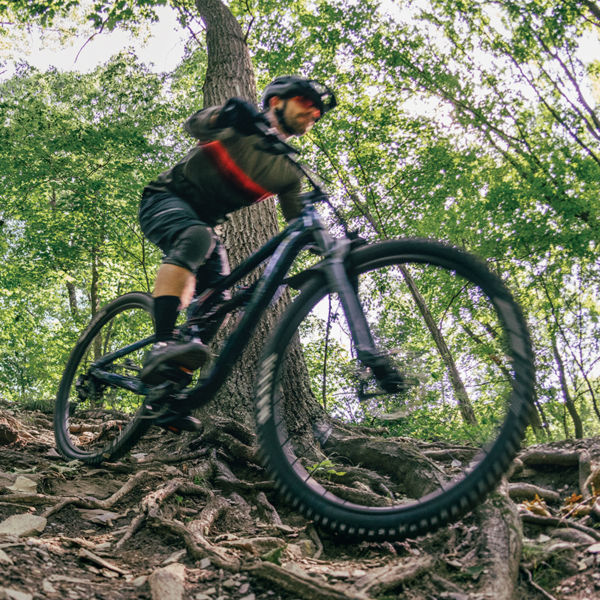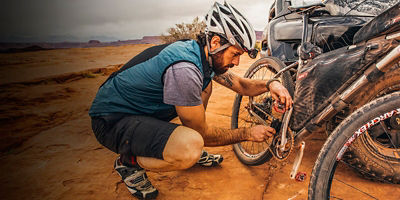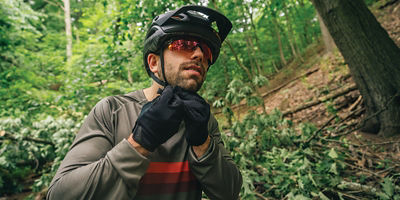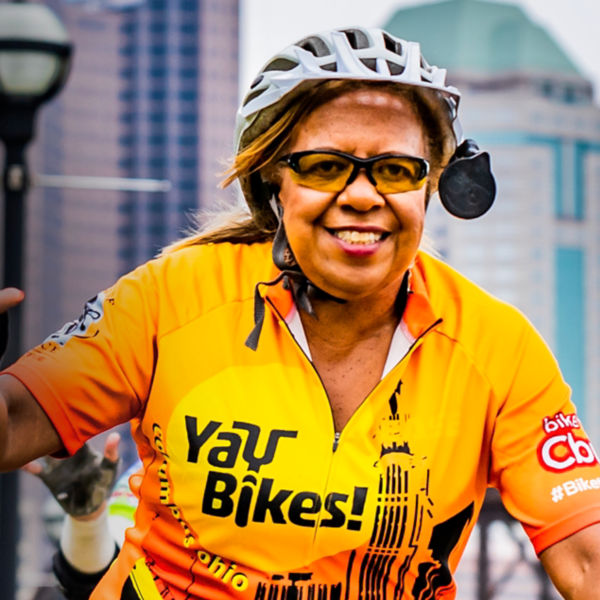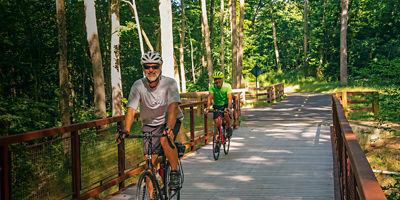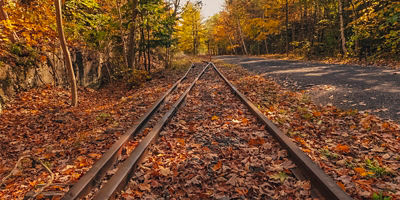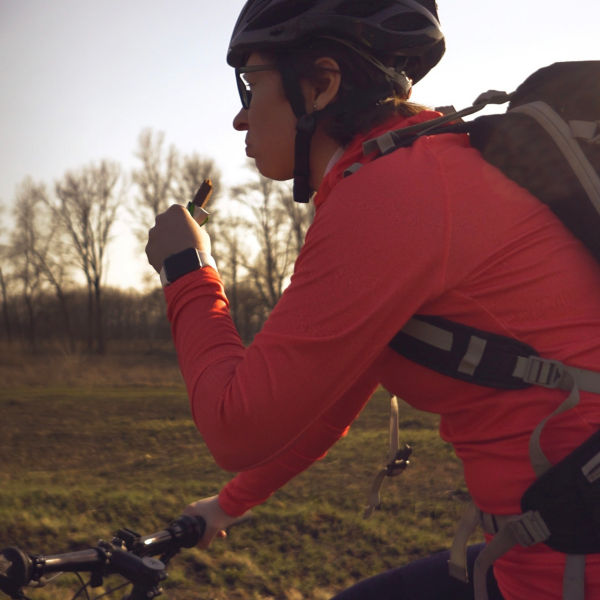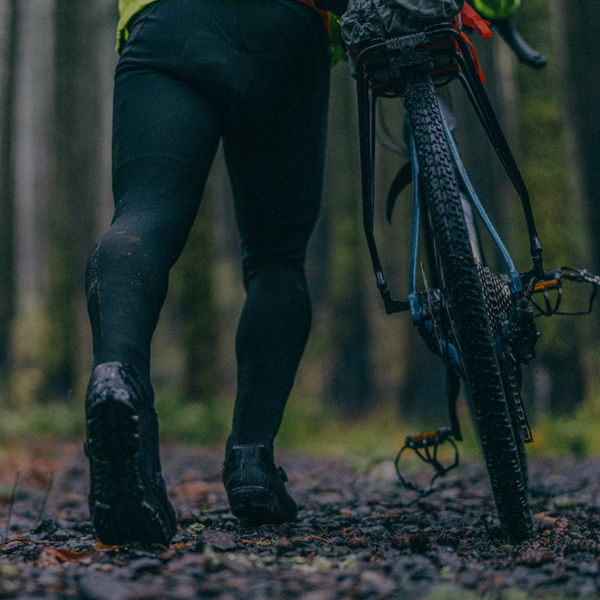
If you want to get out on a bike, don’t get overwhelmed. Think first about what you want out of your rides. Then select the right products and practices to help make those rides the best they can be. Start with the biggest piece first: What type of bike you need.
Pick Your Bike
Once you define your ideal ride, dial in your desires: Are you adding extra laps to your exercise routine, but also wanting a bike to bring on your next camping trip? Maybe you dream of joining that group ride that leaves the coffee shop on Thursday mornings, but you’d rather sit a little more upright. The right bike can do everything you need, and can grow with you when you’re ready for more.
Mountain bikes
You know an MTB when you see one: knobby tires, fancy suspension, climbing-ready gears, an upright riding position, wide handlebars and wide tires for stability. Take note, however, of several diverse subcategories that have developed over its half-century history.
Hardtail mountain bikes (with only front suspension) are the workhorse of the cycling world. Durable and relatively inexpensive, they’re a great option for kids, teenagers, or anyone likely to put a bike through heavy use, whether or not they’ll ever get off the pavement. But thanks to that front suspension and knobby tires, they’re also great for riding narrow dirt trails. You know. Mountain biking.
Full-suspension mountain bikes offer better traction, comfort and control than hardtails. For that reason, they tend to be more attractive to first-time riders, but more expensive. To pick the right option for you, determine how much suspension (aka travel) you need. Short-travel bikes, from 100 to 120 millimeters, are meant for smoother terrain and riders who want their pedal strokes to be rewarded, not absorbed. Long-travel bikes, from 150 to 170mm, are for rougher terrain and adrenaline-seeking riders. Mid-travel bikes are, well, somewhere in the middle.
Road bikes
Think road bikes are only for racing? Not anymore! Yes, they are light and fast, thanks to their narrow, smooth tires and simple, sleek design. But like mountain bikes, they have evolved in recent years. You don’t have to be hunched over like a Tour de France racer to enjoy riding a road bike. And those curved, “drop” handlebars aren’t just for tucking underneath the wind. They offer multiple hand positions to keep you comfortable on long rides.
Comfort or endurance road bikes put riders more upright, offering more relaxed handling characteristics and are geared better for hills and slower speeds. Think Cadillac, not BMW. Most entry-level road bikes are in this category, but there are plenty of high-performance options as well.
Race or aero road bikes are far more serious. If you’re fit, flexible, and ready to hammer, these are the road bikes for you. The buy-in is a little higher, but they are all performance, all the time.
Hybrids
Landing somewhere between a road bike and a mountain bike, hybrids offer less traction and stability in loose dirt, but thanks to their slightly narrower, smoother tires, they’re lighter than a mountain bike and take less effort to get them rolling—and keep them rolling. Ideal for riders considering a mountain bike, but who don’t plan on riding rough, narrow trails (aka singletrack), hybrids are a good choice if you’re riding on pavement the majority of the time, but leaving the option open for gravel paths or dirt roads. Their speed and versatility makes them well suited for commutes to school or work, or short trips to the store.
Fitness hybrids offer a more performance-focused configuration (versus the more casual comfort hybrid) that’s a great alternative to a drop-bar road bike, because they offer a slightly more relaxed riding position, and are usually less expensive. If you like the idea of a hybrid, but want more performance, consider a gravel bike.
Gravel bikes
This is what all the cool kids are talking about. Gravel bikes are essentially endurance road bikes with slightly wider, knobbier tires, and usually feature disc brakes, easier, climbing-friendly gears, and mounting capability for racks and fenders. They have more stable ride characteristics than road bikes thanks to longer wheelbases and wider handlebars, but heavily favor efficiency over capability when compared to a mountain bike.
The drop bars make gravel bikes ideal for longer rides and more aggressive pedaling. If you’re intrigued by the performance advantages of a road bike, but want to avoid cars, a gravel bike is a great way to go exploring in the safety of the backcountry. They are limited in rough terrain because of the narrow tires and lower, narrower handlebars. But if you prefer wider, taller bars and like the idea of gravel biking, fitness hybrids are actually quite similar in capability, and are usually less expensive.
Electric bikes
If you’re on the fence about buying an electric bike, just try one. E-bikes aren’t about rocketing you to excessive speeds. Most top out at 20 miles per hour, which you’d easily reach with a traditional bike on a gentile downslope. Instead, they take the effort out of accelerating and climbing. And most don’t feature a throttle function, so they require that you do some pedaling, but offer various settings that control how hard that pedaling needs to be. That means you still can get a workout, you’ll just go a lot farther. Exactly how much farther depends on several factors, but most e-bikes have a range of 30 to 60 miles on a charge.
Every one of the above categories is available in a motorized version, so no matter what you want to do with your new bike, you can do it more easily if you want to. Keep in mind that most e-bikes weigh between 45 and 60 pounds, so you may need a special rack if you want to transport one on your vehicle. And some bike paths and off-road trails put restrictions on e-bike use, but none sold at Public Lands (e-bike classes 1, 2, and 3) require any type of special licensing to operate.
Gear Necessities
These are the next most critical gear pieces you’ll need to ride safe and make the most of your bike investment.
- A good helmet: No shortcuts here. If you live near a Public Lands store, come in to get properly fitted. A good fit makes your helmet safer and more comfortable, whether it’s a sleek road helmet, a robust mountain helmet or a chique urban helmet.
- Cycling-specific apparel: You don’t need a fancy skin-tight outfit, but breathable, moisture-wicking fabrics help a lot, plus feature gear pockets, sunglass wipes, and reflective panels. And padded shorts are a must. Most can be worn on their own or under thin, baggy shorts to boost comfort and reduce chafing.
- Floor pump and basic tools: Bike tires need to be inflated more regularly than car tires. So, it’s important to keep a floor pump with a pressure gauge handy. And a set of metric Allen wrenches, size 2mm to 6mm, will fit most of the bolts on your bike. You may already have these in your toolbox, but it’s good to have a compact set you can take on a ride.
- Cleaners and lubricants: Your chain will be lubricated from the factory, but you should have a bottle of bike-specific chain lube for when that wears out in a month or two. And though you can use soap and water to clean the bike itself, there are specialty degreasers to clean gunky drivetrain components.
- Hydration: Most bikes offer mounts for a cage that can carry a 20- to 24-ounce bottle. But if you're going on longer rides or live in hotter climates, a hydration backpack can carry up to 100 ounces of water, plus other essentials. Hip packs also offer moderate amounts of storage, and take the weight off your back and shoulders.
- Bike storage: If you don’t have ample floor space, there are plenty of alternatives. It’s OK to hang your bike upside down or by one wheel, so simple rubberized hooks will work given a sturdy enough ceiling, though wall mounts, weatherproof covers, or even pulley systems can lighten the load.




